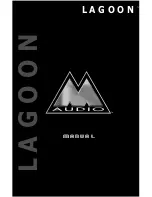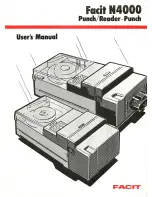
18
User's Guide HDSPe RayDAT
© RME
In AutoSync mode, the system constantly scans all digital inputs for a valid signal. If this signal
corresponds with the current playback sample rate, the card switches from the internal quartz
(
System Clock - Mode Master
) to a clock generated from the input signal (
System Clock - Mode
Slave
). A difference to usual slave behaviour is that when the input signal is lost the card will
immediately switch back to the internal clock, into Master mode.
With the HDSPe RayDAT all inputs operate simultaneously. However, as there is no input se-
lector, the HDSPe has to be told which one of the signals is the sync reference (a digital device
can only be clocked from a
single
source).
Via
Pref. Sync Ref
(preferred
synchronization reference) a
preferred input can be defined. As
long as the card sees a valid signal
there, this input will be designated
as the sync source, otherwise the
other inputs will be scanned in turn.
If none of the inputs are receiving a
valid signal, the card automatically
switches clock mode to ‘Master’.
To cope with some situations which
may arise in studio practice, setting
‘Pref Sync Ref’ is essential. One
example: An ADAT recorder is con-
nected to the ADAT1 input (ADAT1
immediately becomes the sync
source) and a CD player is
connected to the SPDIF input. Try
recording a few samples from the
CD and you will be disappointed:
few CD players can be synchro-
nized. The samples will inevitably be
corrupted, because the signal from
the CD player is read with the wrong
clock from the ADAT i.e. out of sync.
In this case, 'Pref Sync Ref' should be temporarily set to SPDIF.
RME’s exclusive
SyncCheck
technology enables an easy to use check and display of the cur-
rent clock status. The status box labelled
Input Status
indicates whether no signal (‘No Lock’),
a valid signal (‘Lock’) or a valid
and
synchronous signal (‘Sync’) is present at each of the digital
clock source inputs.
In practice, SyncCheck provides the user with an easy way of checking whether all digital de-
vices connected to the system are properly configured. With SyncCheck, finally anyone can
master this common source of error, previously one of the most complex issues in the digital
studio world.
Thanks to its AutoSync technique and lightning fast PLLs, the HDSPe is not only capable of
handling standard frequencies, but also any sample rate between 28 and 200 kHz.
The HDSPe’s outstanding clock control allows for a synchronization of the output signal to the
word clock input signal not only at identical sample rates, but also at half, quarter, double and
quad sample rates. A playback of 192 kHz can easily be synchronized via a 48 kHz word clock
signal.
Содержание Hammerfall HDSPe RayDAT
Страница 5: ...User s Guide HDSPe RayDAT RME 5 User s Guide HDSPe RayDAT General...
Страница 11: ...User s Guide HDSPe RayDAT RME 11 User s Guide HDSPe RayDAT Driver Installation and Operation Windows...
Страница 29: ...User s Guide HDSPe RayDAT RME 29 User s Guide HDSPe RayDAT Driver Installation and Operation Mac OS X...
Страница 38: ...38 User s Guide HDSPe RayDAT RME...
Страница 39: ...User s Guide HDSPe RayDAT RME 39 User s Guide HDSPe RayDAT Connections and TotalMix...
Страница 46: ...46 User s Guide HDSPe RayDAT RME...
Страница 68: ...68 User s Guide HDSPe RayDAT RME...
Страница 69: ...User s Guide HDSPe RayDAT RME 69 User s Guide HDSPe RayDAT Technical Reference...
















































